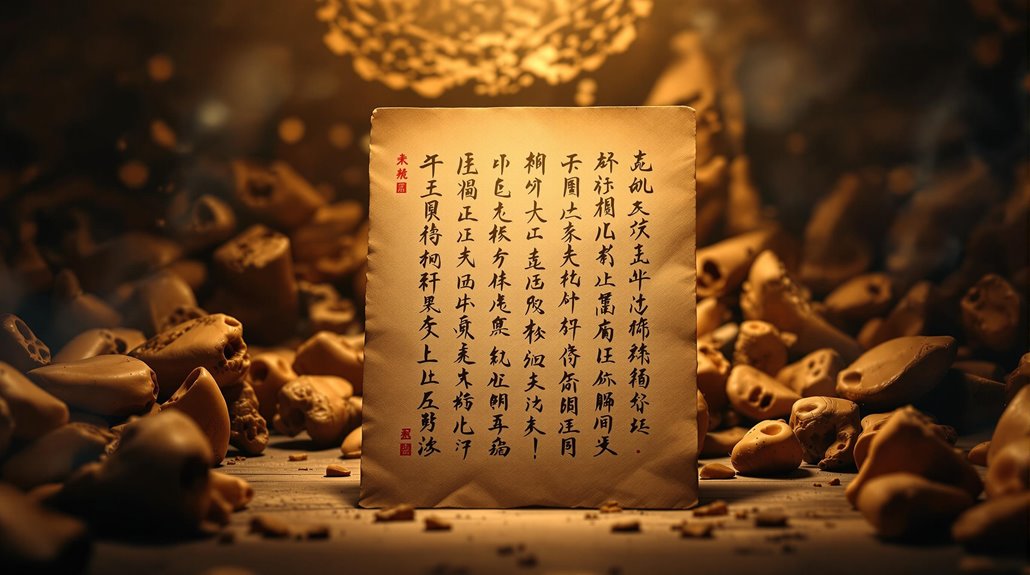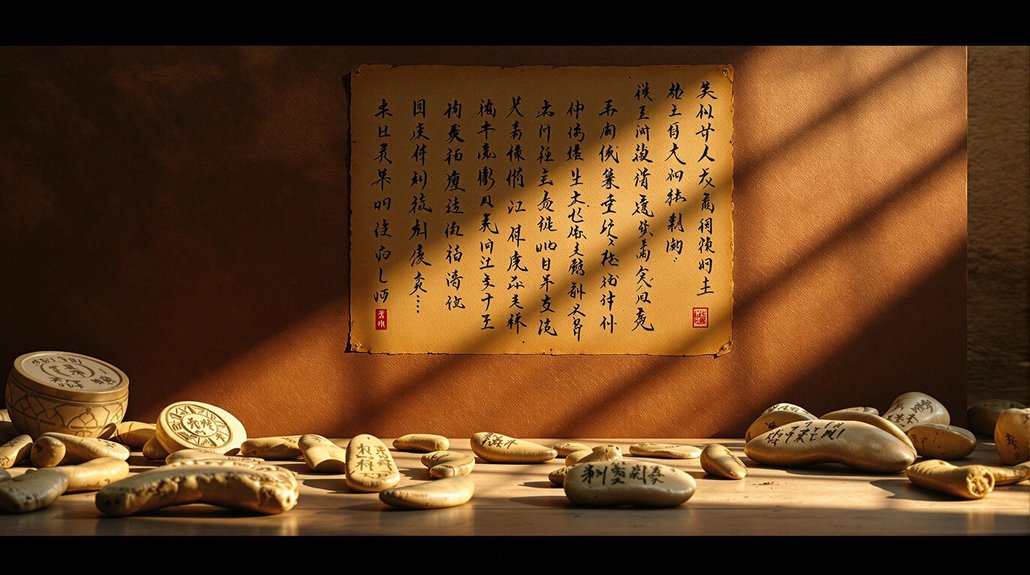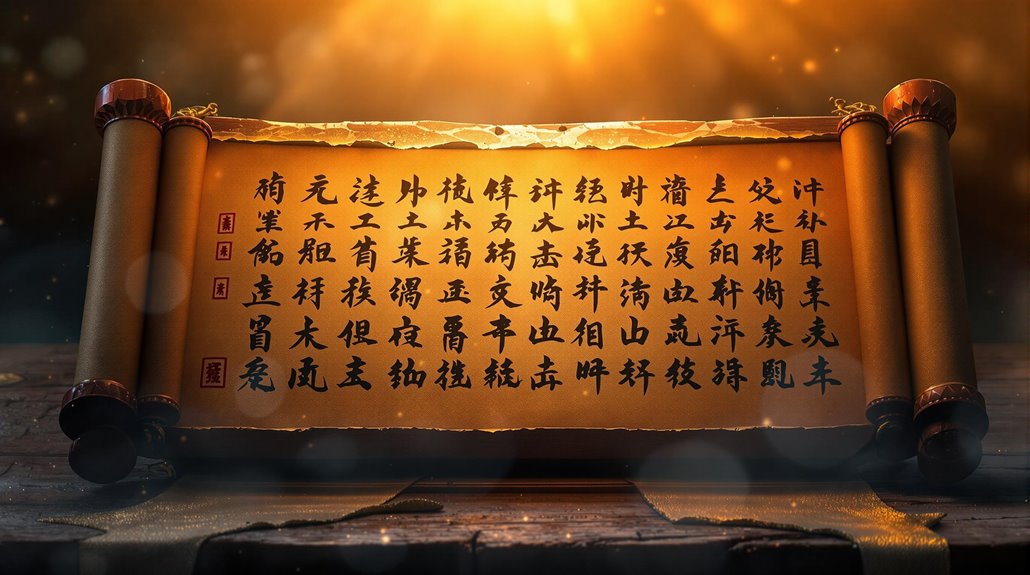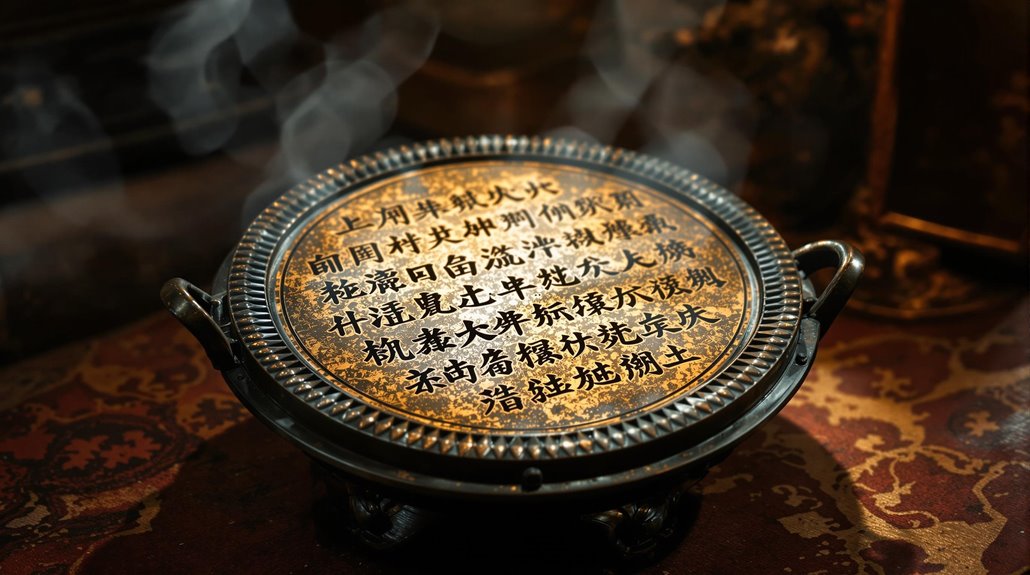An Ancient Chinese Script Had Over 6000 Characters
You'd be utterly mind-blown to discover that ancient Chinese scribes managed to memorize more characters than there are stars visible to the naked eye. The Oracle Bone Script, dating back to the Shang dynasty, wasn't just a simple collection of symbols—it was a sophisticated system that shaped China's cultural foundation. As you explore this remarkable writing system, you'll uncover how these ancient characters influenced everything from politics to spirituality, and why they still matter today.
The Birth of Chinese Characters in Oracle Bones

The discovery of Oracle Bone Script in the late 19th century near Anyang revolutionized our understanding of ancient Chinese writing.
When you trace the oracle bone origins back to the Shang dynasty (14th-11th century BCE), you'll find the earliest known systematic Chinese writing system carved into ox bones and turtle shells. The sharp edges and distinct lines of each character reflected the carving on these hard surfaces.
These ancient inscriptions weren't just random markings – they served a significant purpose in divination practices. Shang rulers would consult deities about everything from weather forecasts to military campaigns, carefully recording their questions in these bones. The bones were carefully prepared through sawing and polishing before being used for divination.
What's remarkable is that this wasn't a primitive system – it was already highly developed, featuring about 5,000 distinct characters. This suggests that Chinese writing had evolved for centuries before the Oracle Bone Script emerged, though earlier evidence hasn't survived.
Early Writing Systems and Their Evolution
While Oracle Bone Script marks the first systematic Chinese writing, a rich history of proto-writing existed long before.
You'll find pictographic origins dating back to 7,000 BCE, with early marks discovered at the Jiahu site in Henan. These primitive symbols evolved into sophisticated logographic systems during the Shang Dynasty. The complexity of these systems led to the creation of an elite literate class that played a crucial role in society. The earliest confirmed writings date from 1200 BCE and were discovered in Henan province.
Here's how Chinese scripts developed over time:
- Greater Seal script appeared around 1000-700 BCE, refining earlier forms
- Lesser Seal script emerged in 700 BCE and continues to be used today
- Clerical Script revolutionized writing around 500 BCE
- Bronze script flourished during the Western Zhou period
- Six States script developed during the Warring States era
This evolution culminated in Qin Shi Huangdi's standardization of characters, setting the foundation for modern Chinese writing.
Decoding the Language of Ancient China
Decoding ancient Chinese scripts presents one of archaeology's most fascinating challenges. Through ancient linguistics and script analysis, you'll discover how researchers have revealed the mysteries of Oracle Bone inscriptions, the earliest known Chinese writing system. Dating back to 1200 BC, these characters were carved into ox bones and tortoise shells during royal divination ceremonies.
Modern technology has revolutionized our understanding of these ancient texts. Tencent's AI tools and Microsoft's Project Diviner have created extensive databases of indexed images, 3D models, and enhanced replicas. Currently, researchers have successfully matched 1,500 characters with their modern Chinese equivalents.
The "indentation highlight" feature helps you visualize shallow carvings that were previously difficult to read. With approximately 4,500 unique characters identified, these innovations are helping scholars piece together the complex puzzle of China's written past. These ancient inscriptions were used by the Shang royal house to record official divinations about matters of state and dynasty.
Cultural Impact and Imperial Standardization
Throughout China's long history, ancient script characters served as more than just a writing system – they embodied cultural identity, artistic expression, and political power. The script's evolution reflects both cultural preservation efforts and imperial standardization, particularly during Qin Shihuangdi's reign (221-207 BCE).
The earliest confirmed evidence of Chinese writing appears in Oracle Bone Inscriptions, which were used for divination purposes. Archaeological findings have revealed that multiple script styles often existed simultaneously in different regions.
You'll find this change evident in how characters evolved from pictographs to more abstract forms.
- Imperial examinations made regular script mandatory for Literary Chinese
- Li Ssu's reforms eliminated regional variations to unify the writing system
- The shift from 'large seal script' to 'small seal script' showed increasing sophistication
- Until the 18th century, Chinese characters dominated global book production
- The writing system influenced neighboring countries' calligraphic traditions
This standardization shaped East Asian literary culture, making Chinese script one of history's most influential writing systems.
Legacy of Oracle Bone Script in Modern Times

Since their groundbreaking discovery in 1899 near Anyang, oracle bones have revolutionized our understanding of ancient Chinese civilization.
These inscriptions were carved on bones for divination rituals and prophecies.
As the earliest East Asian writing, these inscriptions represent a mature writing system that has influenced Chinese script for millennia.
Today, you'll find these ancient artifacts at the forefront of technological innovation, with modern applications transforming how we study and preserve them. The Jingyuan Digital Platform, launched in 2024, gives you access to over 52,000 digitized glyphs, while AI technologies like OBSD assist in deciphering previously unknown characters.
You can now examine oracle bones in unprecedented detail through high-resolution imaging, rotation tools, and advanced database queries. Scientists have even developed specialized fonts and text editors for digital transcription, making these ancient writings more accessible than ever.
This fusion of ancient wisdom and modern technology continues to reveal new insights into China's earliest writing system.










